
Rolf Art is pleased to announce its participation at ARTBO ART WEEK 2021 that will take place from September 29th to October 3rd through an alternative and safe experience extended in the traditional circuits of Bogotá city: Historic Center, Macarena, Teusaquillo / Chapinero and San Felipe.
Rolf Art exhibition will take place with a site specific show in Torres Atrio - 32nd floor, at Macarena circuit. The artistic proposal brings together a careful selection of works by María José Arjona (b. 1973, Colombia), José Alejandro Restrepo (b. 1959, Colombia) & María Teresa Hincapié (1956-2008, Colombia), Marcos López (b. 1958, Argentina) & Liliana Maresca (1951-1994, Argentina), Silvia Rivas (b. 1957, Argentina), Marcelo Brodsky (b. 1954 , Argentina) and Ananké Asseff (b. 1971, Argentina). Through different artistic expressions articulated by the performance act, the selected artworks address the sensitive condition of the body in relationship with the public and the private space, aligned with Atrio Towers' architectural design concept, chosen to house the exhibition. How to think the space if it is not from the collective exercise of the body as the main axis of our questions in relation to the political, the social, the diversity, the democracy? How can we make use of the institutions as spaces to question the present and open the idea of future?
Rolf Art proposal for ARTBO ART WEEK 2021 accompanies and completes our artists' parallel exhibitions projects taking place in Colombia: María José Arjona's solo show “Como es adentro es afuera” curated by André Lepecki at NC-arte and Atrio Towers; the group show “Periódicos de ayer“ curated by Maria Willis Londoño y Alexis Fabry at the Art Museum Miguel Urrutia (MAMU) which is part of the Red Cultural del Banco de la República, in which Liliana Maresca and Marcos López participate with their remarkable work "Imagen Pública - Altas Esferas"; the double participation of Marcelo Brodsky with his series "Juntos Aparte" in the framework of Bienalsur 2021; the future tribute exhibition that recognizes the legacy of María Teresa Hincapié at the Museum of Modern Art of Medellín (MAMM); and the upcoming Silvia Rivas retrospective curated by Eugenio Viola at the Museum of Modern Art of Bogotá (MAMBO).
Rolf Art, located in Buenos Aires and founded by Florencia Giordana Braun in 2009, focuses on contemporary Latin American visual arts. The gallery features works exploring photographic media and its boundaries. The selection of artists considers pieces with an inextricable union between critical density and aesthetic values, the relationship between formal strategies and conceptual depth is always in conflict. The curatorial profile of the gallery first and foremost challenges the political context and the representation of what is considered a political image within the boundaries of the photographic medium. It also considers the social and economical context of artistic production and understands it as a determining factor for art’s interpretation.
We are committed to a select group of contemporary established Latin American artists, promoting them on a national and international basis. We support their artistic production together with editorial and audiovisual projects.
The gallery’s mission is to promote the appreciation of contemporary art and to push the boundaries of visual arts.


Artist focused on performance, María José Arjona plans to rethink the roles of the movement of matter in space, time, and the duration of that interaction, assuming a perspective that proposes to develop negotiation maneuvers where research and writing are the experimental spaces to develop the reflection. Her work insists on confronting the system, transforming itself into a fundamental tool of provocation and connection with the other, each piece being a set of poetic and choreographic strategies where bodies are the link and the battlefield capable of materializing the repercussions of the clash of forces between them and with the objects that also inhabit the same space, stimulating and transforming themselves in this dynamic. Gestures as a clear manifestation of feelings, needs, states of mind, are an invaluable source for the artist who finds in them a kind of archive that collects and registers emotions within political and social power structures, applying an acute point of view that contemplates philosophical readings in order to emphasize their interest in transition, transformation and becoming as actions of resistance. In her series “White (IN-TRANSIT BERLIN 2009)”, “Vires” (2010), “All the others in me” (2012) and “Lifeline” (2016), Arjona displays a range of performance proposals where the body is always in the center of the scene, though as a vehicle not only for denouncing violence and socio-political problems, but as a promoter of alternative ways of thinking about them, the body as a means of rethinking communication and lack of communication, the messages given for granted, the lack of questioning about thoughts that are given to us and we naturalize without opposing debate. In Arjona’s work, the viewer is invited to assume a physical and intellectual active role.
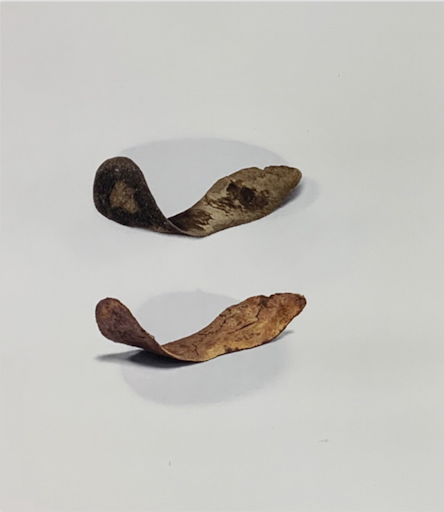

Artist focused on performance, María José Arjona plans to rethink the roles of the movement of matter in space, time, and the duration of that interaction, assuming a perspective that proposes to develop negotiation maneuvers where research and writing are the experimental spaces to develop the reflection. Her work insists on confronting the system, transforming itself into a fundamental tool of provocation and connection with the other, each piece being a set of poetic and choreographic strategies where bodies are the link and the battlefield capable of materializing the repercussions of the clash of forces between them and with the objects that also inhabit the same space, stimulating and transforming themselves in this dynamic. Gestures as a clear manifestation of feelings, needs, states of mind, are an invaluable source for the artist who finds in them a kind of archive that collects and registers emotions within political and social power structures, applying an acute point of view that contemplates philosophical readings in order to emphasize their interest in transition, transformation and becoming as actions of resistance. In her series “White (IN-TRANSIT BERLIN 2009)”, “Vires” (2010), “All the others in me” (2012) and “Lifeline” (2016), Arjona displays a range of performance proposals where the body is always in the center of the scene, though as a vehicle not only for denouncing violence and socio-political problems, but as a promoter of alternative ways of thinking about them, the body as a means of rethinking communication and lack of communication, the messages given for granted, the lack of questioning about thoughts that are given to us and we naturalize without opposing debate. In Arjona’s work, the viewer is invited to assume a physical and intellectual active role.
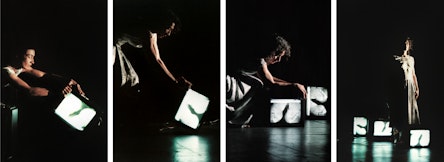
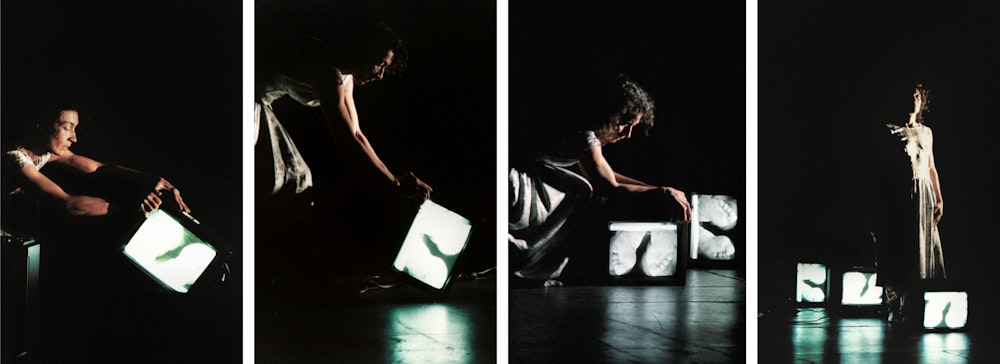
María Teresa Hincapié, with a strong imprint due to the experience within the anthropological theater towards the end of the 70s, developed a corpus of work where the rigorous handling of the body, a great sense of the intervened space and time, occupy crucial aspects in her creations. Her extensive training and research on dance and theater in different cultures – especially oriental ones – linked her work especially with the field of performance, becoming one of its most prominent representatives in Colombia. Her visual actions, of an intense gestural and poetic character, reveal gender issues such as oppression, loneliness and abandonment. The static and tense rhythms of her presentations create an atmosphere that is often claustrophobic and openly critical of certain circumstances of social and sexual alienation. The artist carried out actions that took physical effort to limits that revealed pain as an intimate and universal expression. Her epic marathon journeys of symbolic nature are remembered, carried out in Colombia, Mexico and other countries, pointing out cultural and political milestones through extensive geographical tours carried out on foot and the exhausted and prolonged actions in museums where daily acts were revealed as metaphors which provoked emotion and reflection; “Vitrina” (1989) is a clear example of the work of an artist who intends to physically manifest the tensions of psychological, political and social violence practiced, especially, on female identity.
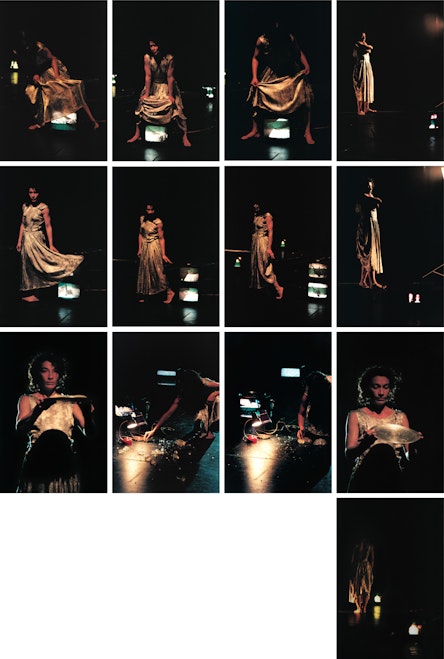

María Teresa Hincapié, with a strong imprint due to the experience within the anthropological theater towards the end of the 70s, developed a corpus of work where the rigorous handling of the body, a great sense of the intervened space and time, occupy crucial aspects in her creations. Her extensive training and research on dance and theater in different cultures – especially oriental ones – linked her work especially with the field of performance, becoming one of its most prominent representatives in Colombia. Her visual actions, of an intense gestural and poetic character, reveal gender issues such as oppression, loneliness and abandonment. The static and tense rhythms of her presentations create an atmosphere that is often claustrophobic and openly critical of certain circumstances of social and sexual alienation. The artist carried out actions that took physical effort to limits that revealed pain as an intimate and universal expression. Her epic marathon journeys of symbolic nature are remembered, carried out in Colombia, Mexico and other countries, pointing out cultural and political milestones through extensive geographical tours carried out on foot and the exhausted and prolonged actions in museums where daily acts were revealed as metaphors which provoked emotion and reflection; “Vitrina” (1989) is a clear example of the work of an artist who intends to physically manifest the tensions of psychological, political and social violence practiced, especially, on female identity.
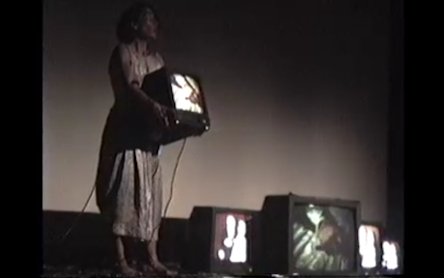
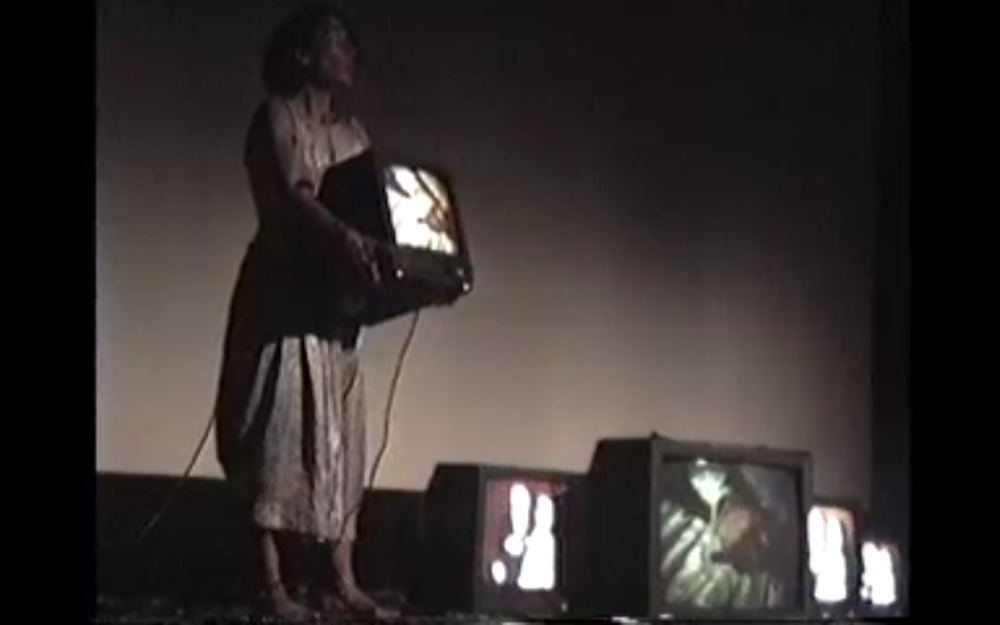
María Teresa Hincapié, with a strong imprint due to the experience within the anthropological theater towards the end of the 70s, developed a corpus of work where the rigorous handling of the body, a great sense of the intervened space and time, occupy crucial aspects in her creations. Her extensive training and research on dance and theater in different cultures – especially oriental ones – linked her work especially with the field of performance, becoming one of its most prominent representatives in Colombia. Her visual actions, of an intense gestural and poetic character, reveal gender issues such as oppression, loneliness and abandonment. The static and tense rhythms of her presentations create an atmosphere that is often claustrophobic and openly critical of certain circumstances of social and sexual alienation. The artist carried out actions that took physical effort to limits that revealed pain as an intimate and universal expression. Her epic marathon journeys of symbolic nature are remembered, carried out in Colombia, Mexico and other countries, pointing out cultural and political milestones through extensive geographical tours carried out on foot and the exhausted and prolonged actions in museums where daily acts were revealed as metaphors which provoked emotion and reflection; “Vitrina” (1989) is a clear example of the work of an artist who intends to physically manifest the tensions of psychological, political and social violence practiced, especially, on female identity.
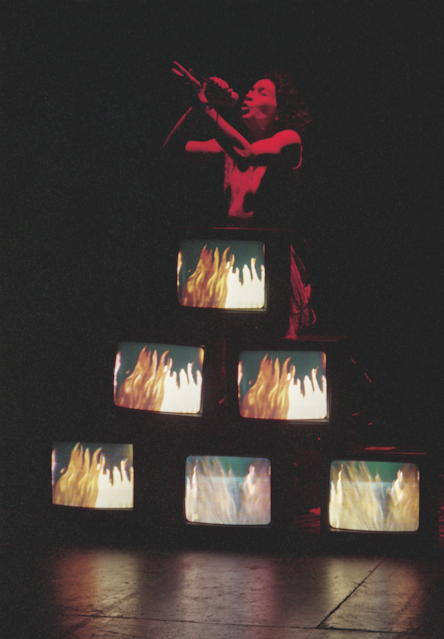
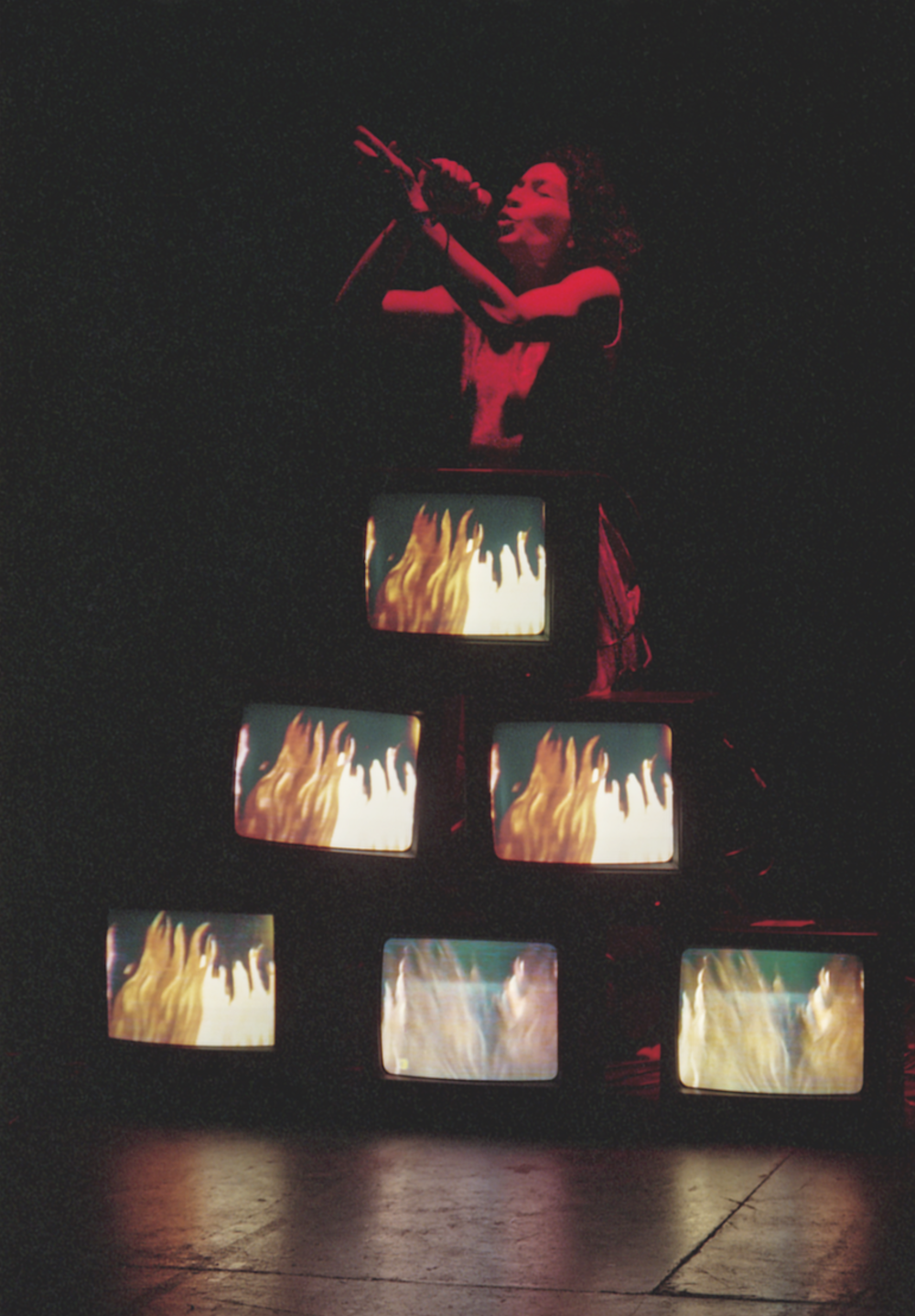
José Alejandro Restrepo is a central figure in Latin American contemporary art, with more than thirty years of production within the historical panorama of electronic arts in our continent. His training and interests are varied and range from the visual and performing arts, installation, photography, performance and editorial production, establishing himself as a model of contemporary artist who operates from hybridity. His work is based on serious research on the speeches of the dominant power and popular beliefs that derive in a critical vision and whose interpretations dismantle the ideology of the system. The recovery of the theatricality of Catholicism and the codes of the colonial baroque by the political / media and the slide towards politics of some of the most important religious themes, such as punishment, redemption and sacrifice (as legitimization of violence), occupy a central role in the artist’s work. A pioneer of video art, Restrepo puts the documentary image in dialogue through a work exhibited under several formats and devices, using the resources of video technology and electronic image to accentuate a deviation from the discourses of the entertainment and the mainstream of contemporary art. In order to do this, the artist often resorts to the re-appropriation of television images and their manipulation, reconstructing the messages of the mass media to highlight the value given to images. Some of his most outstanding works are “Pavements”, “The pass of Quindío I”, “Paradisiacal Muse” and “Iconomia".

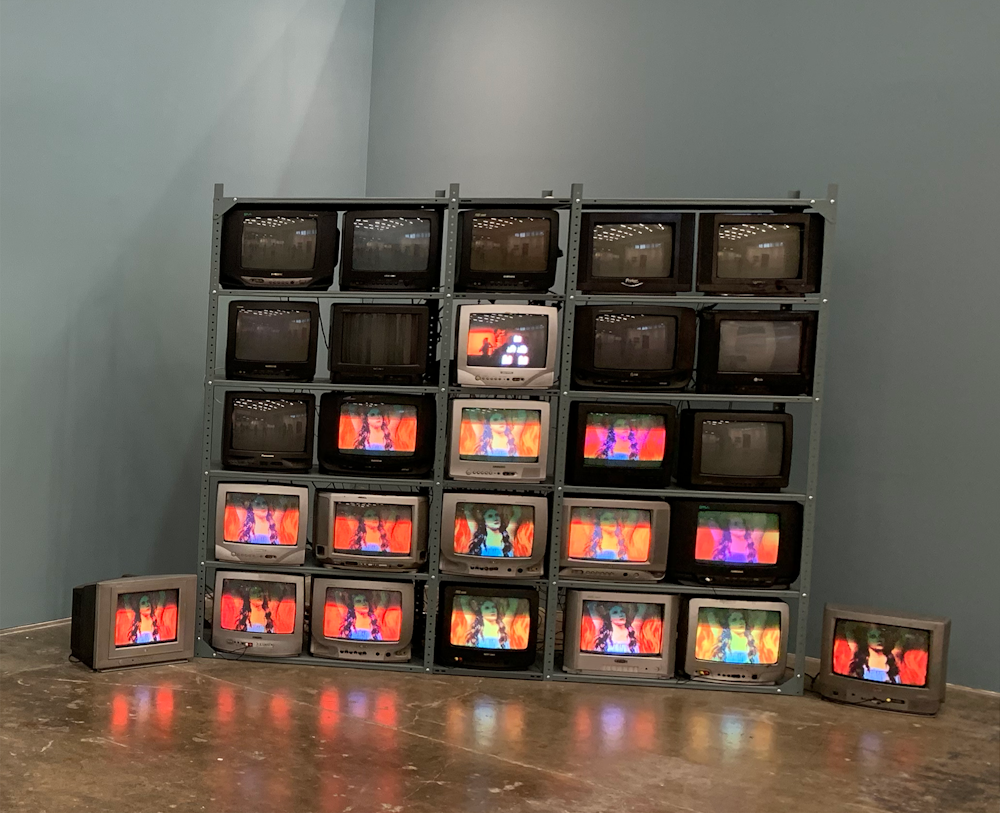
José Alejandro Restrepo is a central figure in Latin American contemporary art, with more than thirty years of production within the historical panorama of electronic arts in our continent. His training and interests are varied and range from the visual and performing arts, installation, photography, performance and editorial production, establishing himself as a model of contemporary artist who operates from hybridity. His work is based on serious research on the speeches of the dominant power and popular beliefs that derive in a critical vision and whose interpretations dismantle the ideology of the system. The recovery of the theatricality of Catholicism and the codes of the colonial baroque by the political / media and the slide towards politics of some of the most important religious themes, such as punishment, redemption and sacrifice (as legitimization of violence), occupy a central role in the artist’s work. A pioneer of video art, Restrepo puts the documentary image in dialogue through a work exhibited under several formats and devices, using the resources of video technology and electronic image to accentuate a deviation from the discourses of the entertainment and the mainstream of contemporary art. In order to do this, the artist often resorts to the re-appropriation of television images and their manipulation, reconstructing the messages of the mass media to highlight the value given to images. Some of his most outstanding works are “Pavements”, “The pass of Quindío I”, “Paradisiacal Muse” and “Iconomia".


José Alejandro Restrepo is a central figure in Latin American contemporary art, with more than thirty years of production within the historical panorama of electronic arts in our continent. His training and interests are varied and range from the visual and performing arts, installation, photography, performance and editorial production, establishing himself as a model of contemporary artist who operates from hybridity. His work is based on serious research on the speeches of the dominant power and popular beliefs that derive in a critical vision and whose interpretations dismantle the ideology of the system. The recovery of the theatricality of Catholicism and the codes of the colonial baroque by the political / media and the slide towards politics of some of the most important religious themes, such as punishment, redemption and sacrifice (as legitimization of violence), occupy a central role in the artist’s work. A pioneer of video art, Restrepo puts the documentary image in dialogue through a work exhibited under several formats and devices, using the resources of video technology and electronic image to accentuate a deviation from the discourses of the entertainment and the mainstream of contemporary art. In order to do this, the artist often resorts to the re-appropriation of television images and their manipulation, reconstructing the messages of the mass media to highlight the value given to images. Some of his most outstanding works are “Pavements”, “The pass of Quindío I”, “Paradisiacal Muse” and “Iconomia".
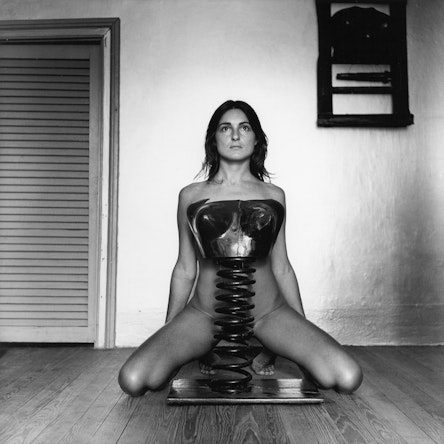
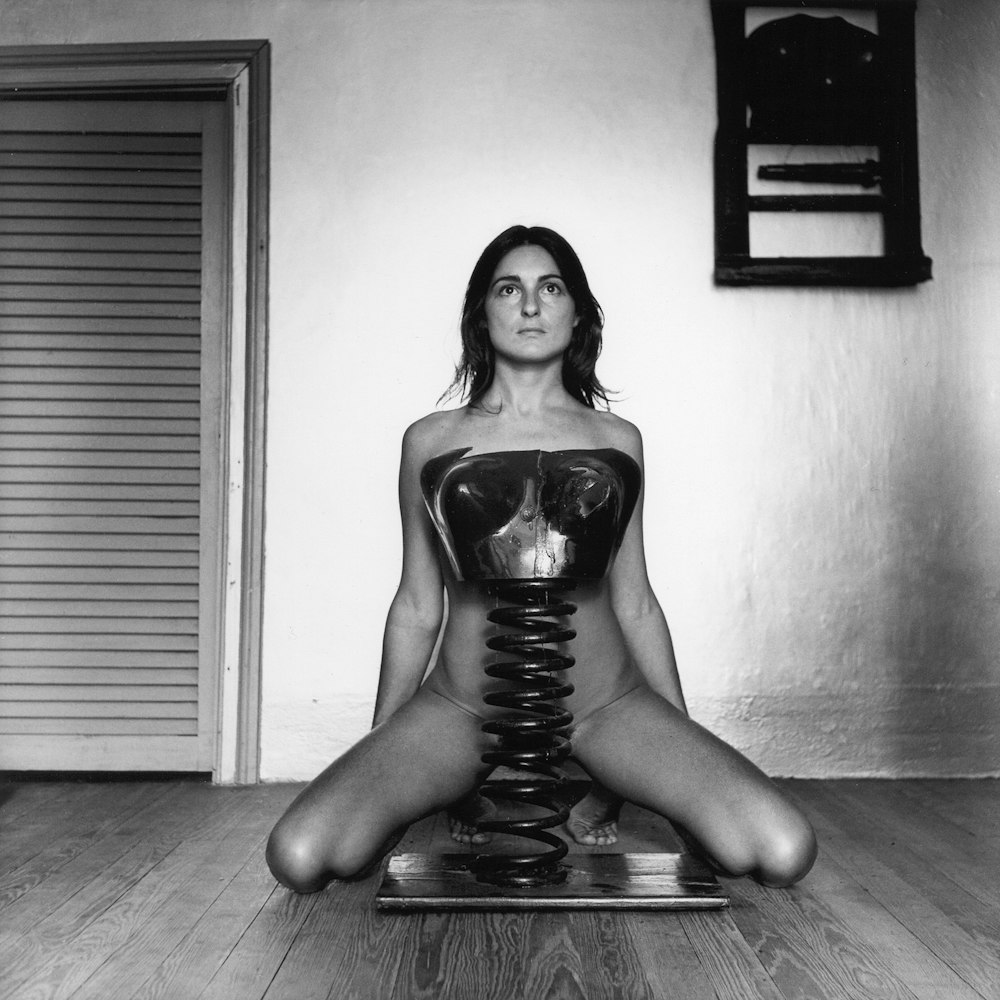
Outstanding artist in the artistic panorama of the 80’s in Buenos Aires, Liliana Maresca generated a paradigmatic work since the early eighties, starring in the enthusiastic youth bohemian that detonated in Buenos Aires after the return of democracy, quickly transforming into an inflection figure who initiates and develops many of the avant-gardes that will characterize the art of the 90s. Her activity included paintings, objects, sculptures, installations, performances and photo-performances. Her works collect the neo-Dada spirit, minimalist models and conceptual strategies that dominated the artistic panorama of the second half of the 20th century in Argentina, intertwined with the iconographic repertoire of alchemy and spiritual searches, making use of the technological resources that the time offered, without forgetting in any case the necessary poetic elaboration. An artist who knew how to work in dialogue with her contemporary colleagues, highlighting one of the most controversial stages in Argentina after the military dictatorship, making the content of the image both an aesthetic and a documentary register. Her strong activism as an artist and as a woman committed to her social context, made her develop a characteristic discourse where the focus was not on unjustified confrontation but on offering her own body as a battlefield to question the status quo; works such as “Liliana Maresca with her work”, “Public image – High Spheres” or the self-portraits of Maresca in the Marconetti Building or the National Museum of Fine Arts, among many, give an account of this. The graphic media also served her to question the concept of work of art as a single piece, making it possible to multiply its image as a poster, thus approaching the field of mass communication. But it was as a pioneer in photoperformance – by then without that denomination – where Maresca found the ideal support to point out and denounce situations of social and gender-based violence, hypocrisy and double discourses, always committing her body, assuming different fictitious personalities, protagonists of stories where the image becomes a vehicle for the artist’s actions, a auxiliary that complements the action by fixing a moment in time, transforming it into something worth preserving.
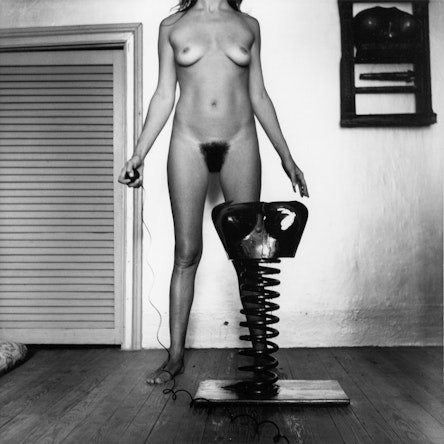
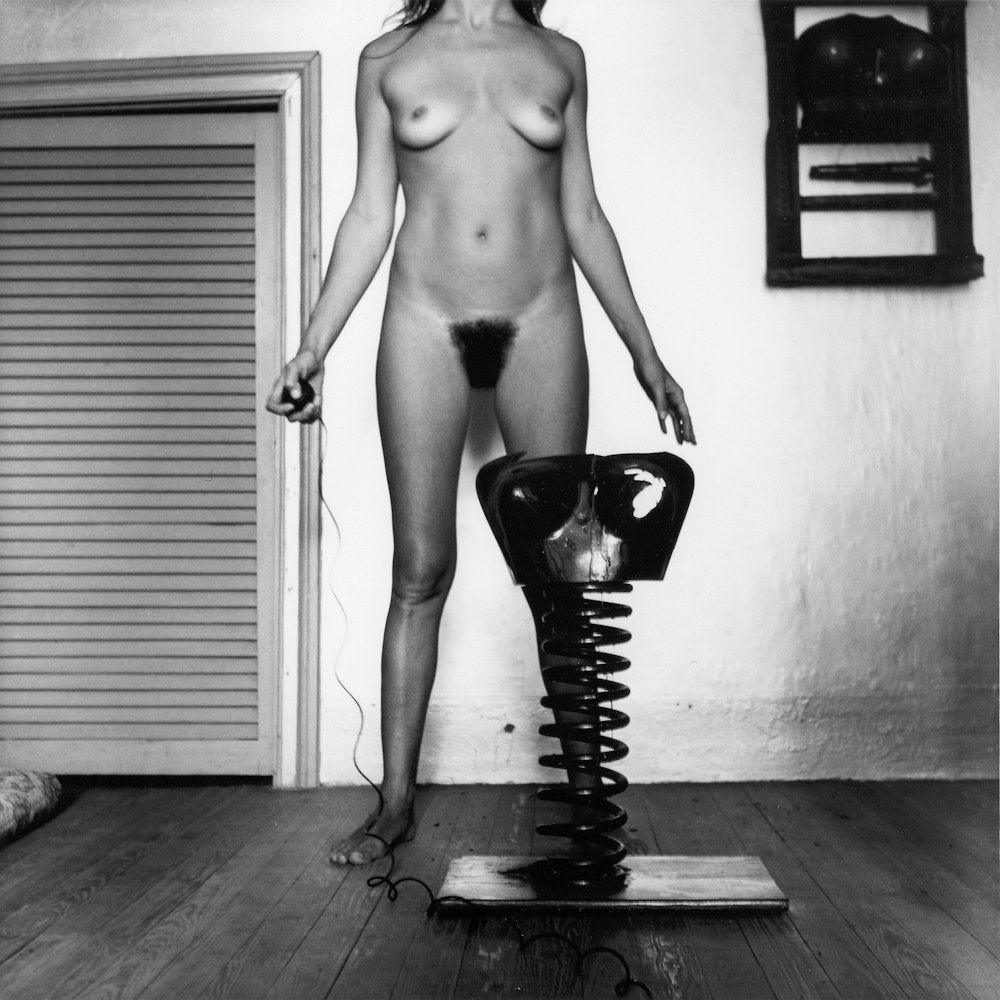
Outstanding artist in the artistic panorama of the 80’s in Buenos Aires, Liliana Maresca generated a paradigmatic work since the early eighties, starring in the enthusiastic youth bohemian that detonated in Buenos Aires after the return of democracy, quickly transforming into an inflection figure who initiates and develops many of the avant-gardes that will characterize the art of the 90s. Her activity included paintings, objects, sculptures, installations, performances and photo-performances. Her works collect the neo-Dada spirit, minimalist models and conceptual strategies that dominated the artistic panorama of the second half of the 20th century in Argentina, intertwined with the iconographic repertoire of alchemy and spiritual searches, making use of the technological resources that the time offered, without forgetting in any case the necessary poetic elaboration. An artist who knew how to work in dialogue with her contemporary colleagues, highlighting one of the most controversial stages in Argentina after the military dictatorship, making the content of the image both an aesthetic and a documentary register. Her strong activism as an artist and as a woman committed to her social context, made her develop a characteristic discourse where the focus was not on unjustified confrontation but on offering her own body as a battlefield to question the status quo; works such as “Liliana Maresca with her work”, “Public image – High Spheres” or the self-portraits of Maresca in the Marconetti Building or the National Museum of Fine Arts, among many, give an account of this. The graphic media also served her to question the concept of work of art as a single piece, making it possible to multiply its image as a poster, thus approaching the field of mass communication. But it was as a pioneer in photoperformance – by then without that denomination – where Maresca found the ideal support to point out and denounce situations of social and gender-based violence, hypocrisy and double discourses, always committing her body, assuming different fictitious personalities, protagonists of stories where the image becomes a vehicle for the artist’s actions, a auxiliary that complements the action by fixing a moment in time, transforming it into something worth preserving.

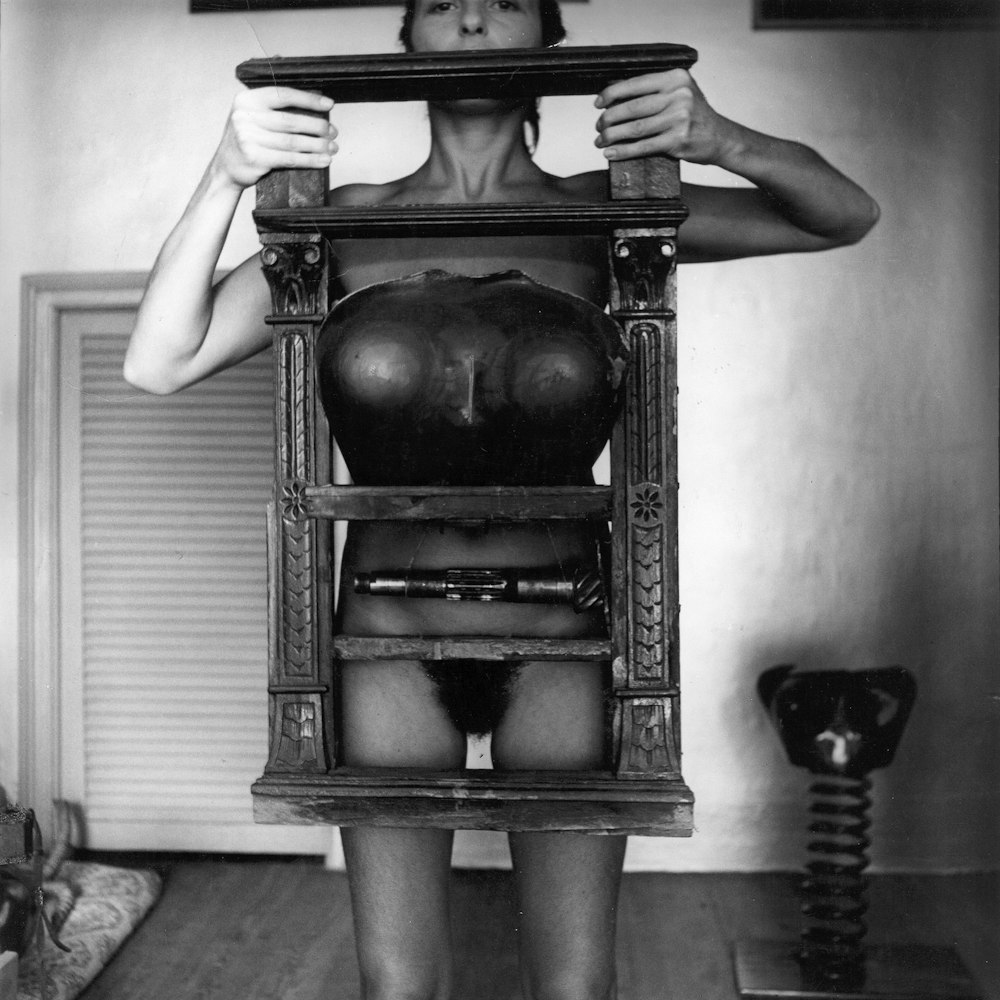
Outstanding artist in the artistic panorama of the 80’s in Buenos Aires, Liliana Maresca generated a paradigmatic work since the early eighties, starring in the enthusiastic youth bohemian that detonated in Buenos Aires after the return of democracy, quickly transforming into an inflection figure who initiates and develops many of the avant-gardes that will characterize the art of the 90s. Her activity included paintings, objects, sculptures, installations, performances and photo-performances. Her works collect the neo-Dada spirit, minimalist models and conceptual strategies that dominated the artistic panorama of the second half of the 20th century in Argentina, intertwined with the iconographic repertoire of alchemy and spiritual searches, making use of the technological resources that the time offered, without forgetting in any case the necessary poetic elaboration. An artist who knew how to work in dialogue with her contemporary colleagues, highlighting one of the most controversial stages in Argentina after the military dictatorship, making the content of the image both an aesthetic and a documentary register. Her strong activism as an artist and as a woman committed to her social context, made her develop a characteristic discourse where the focus was not on unjustified confrontation but on offering her own body as a battlefield to question the status quo; works such as “Liliana Maresca with her work”, “Public image – High Spheres” or the self-portraits of Maresca in the Marconetti Building or the National Museum of Fine Arts, among many, give an account of this. The graphic media also served her to question the concept of work of art as a single piece, making it possible to multiply its image as a poster, thus approaching the field of mass communication. But it was as a pioneer in photoperformance – by then without that denomination – where Maresca found the ideal support to point out and denounce situations of social and gender-based violence, hypocrisy and double discourses, always committing her body, assuming different fictitious personalities, protagonists of stories where the image becomes a vehicle for the artist’s actions, a auxiliary that complements the action by fixing a moment in time, transforming it into something worth preserving.
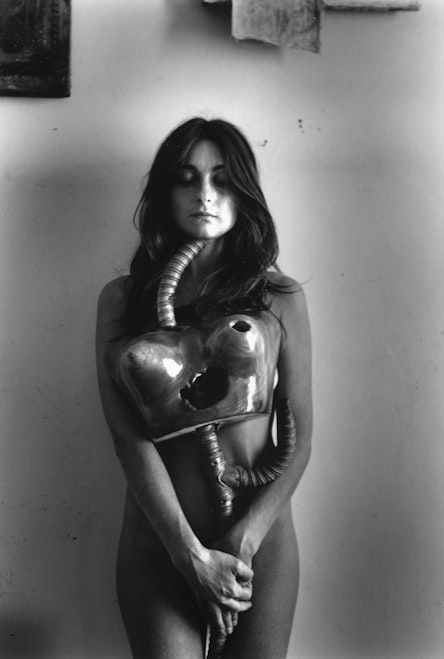
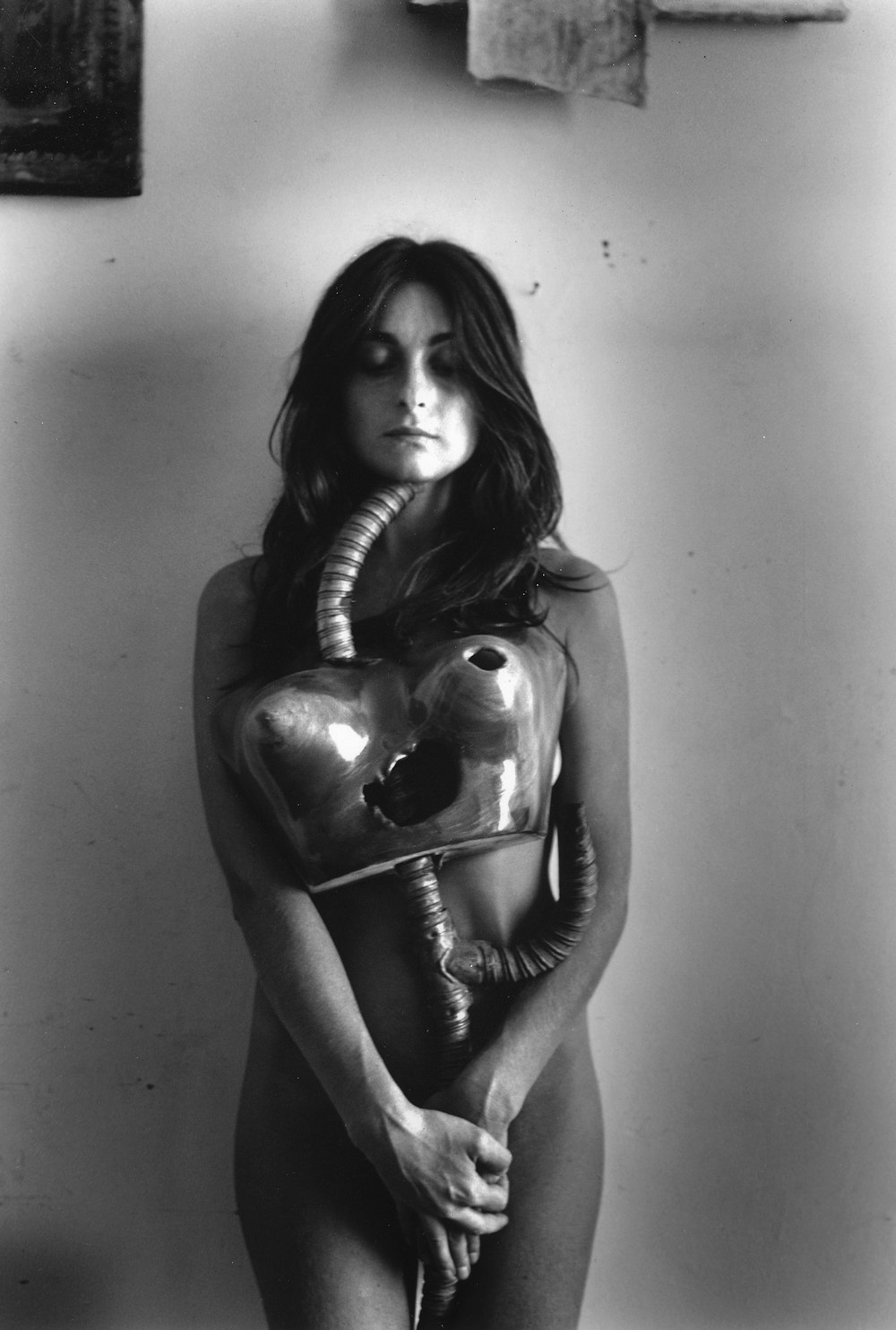
Marcos López’s photographs are a kind of vintage X-rays. Visual language does not denote what it designates but rather displaces the meaning, establishing associations between elements with an apparent lack of relation to each other. Addressing a sociological perspective, the artist transgresses the purism of photography while questioning the linguistic paradigm of traditional documentary photography. The register of the real no longer passes through the photo shoot, through a clipping exerted on the phenomenal reality, but through the construction of pictures or narratives according to procedures related rather to film fiction production. Intimate documentary scenes, popular stories, records of crude, marginal, precarious urbanity, captured in black and white –typical aesthetics of his first years of work- summarize daily life and a corpus of values that live in the heart of families, always exerting a look that gravitates between homage and humor. Rigid poses, solemnity, a certain tension of the models will be a constant in Lopez’s work, showing a solid intentionality without leaving any detail to chance, but rather seeking a compositional balance of the final image typical of a staging. Black and white gives rise to color and there appears the emblematic spirit of his aesthetic works “Latin American Pop” where the baroque horror vacui is reworked by Lopez from Pop Art, thus accounting for a peripheral culture devastated by the effects of hegemonic capitalism and the relationship between power and domination established by the West. Series such as “Black and White” (1982-1992), “Colored Black and White” (1986-2003), “Urban Landscape” (2002-2003), “Criollo Sub-realismo” (2005-2010), “Latin Pop”(1996-2004),“ Debut and Farewell”(2011-2015) among others, refer to a perspective where the artist contemplates kitsch, his delicate pleasure in the accumulation of decorative objects and symbols, documentary allegories, theatricality of the gestures, the intense colors and the resonances of a long tradition that ranges from Mexican Muralism to documentary photography and political cinema, appropriation, the juxtaposition of photographic quotes, the dialogue between painting, photography and the model. Displaying a wide range of stylistic and formal resources, Lopez creates a story where the confrontation between cultures, mandates, impositions, truth criteria and representation reworked from a particular point of view as critical as creative.
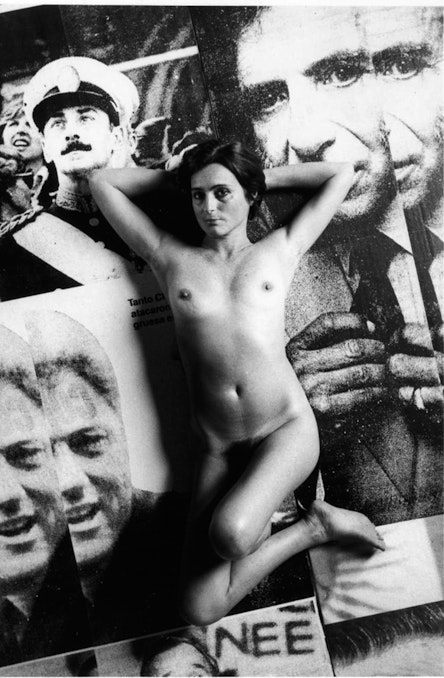
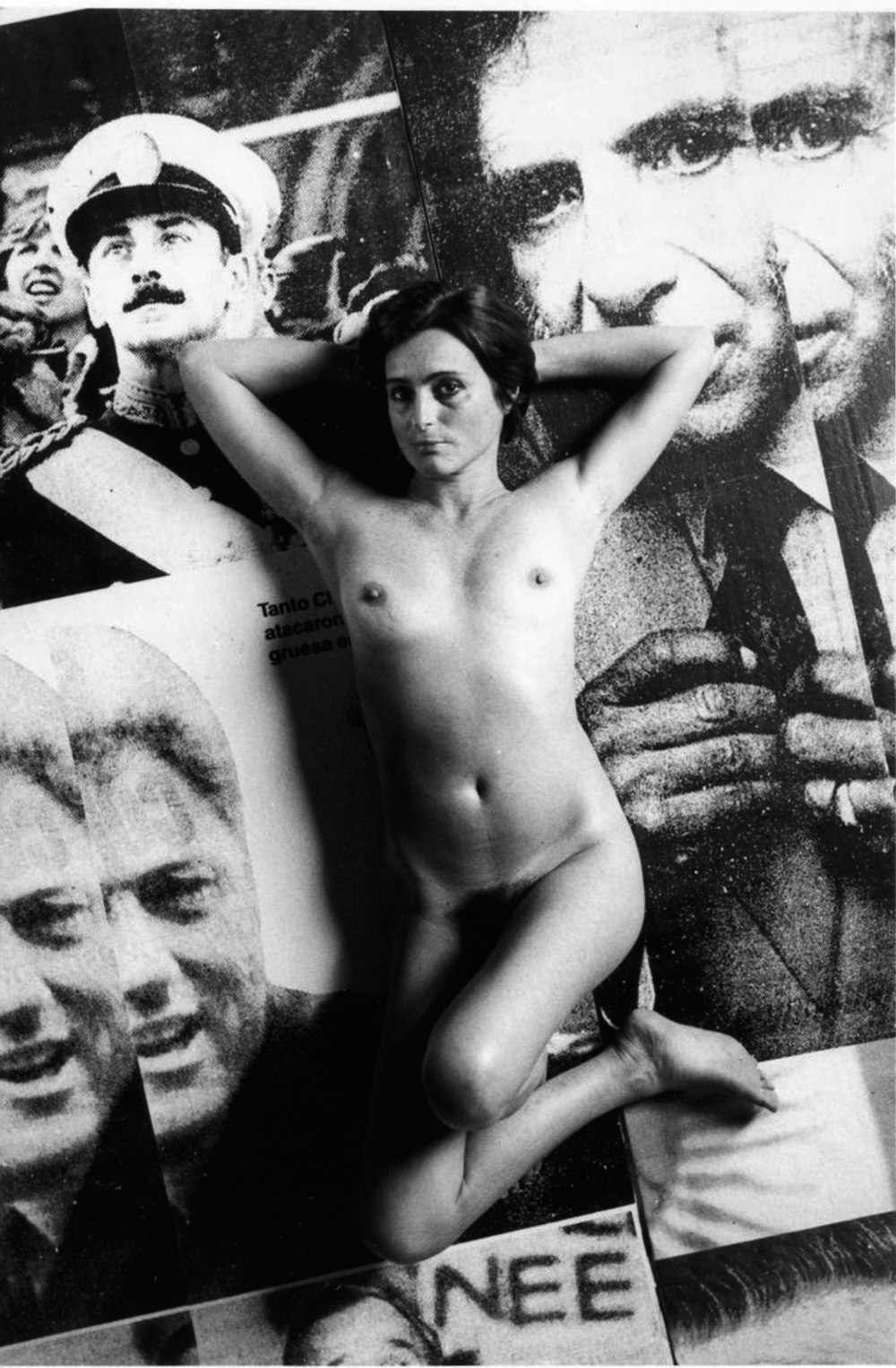
Marcos López’s photographs are a kind of vintage X-rays. Visual language does not denote what it designates but rather displaces the meaning, establishing associations between elements with an apparent lack of relation to each other. Addressing a sociological perspective, the artist transgresses the purism of photography while questioning the linguistic paradigm of traditional documentary photography. The register of the real no longer passes through the photo shoot, through a clipping exerted on the phenomenal reality, but through the construction of pictures or narratives according to procedures related rather to film fiction production. Intimate documentary scenes, popular stories, records of crude, marginal, precarious urbanity, captured in black and white –typical aesthetics of his first years of work- summarize daily life and a corpus of values that live in the heart of families, always exerting a look that gravitates between homage and humor. Rigid poses, solemnity, a certain tension of the models will be a constant in Lopez’s work, showing a solid intentionality without leaving any detail to chance, but rather seeking a compositional balance of the final image typical of a staging. Black and white gives rise to color and there appears the emblematic spirit of his aesthetic works “Latin American Pop” where the baroque horror vacui is reworked by Lopez from Pop Art, thus accounting for a peripheral culture devastated by the effects of hegemonic capitalism and the relationship between power and domination established by the West. Series such as “Black and White” (1982-1992), “Colored Black and White” (1986-2003), “Urban Landscape” (2002-2003), “Criollo Sub-realismo” (2005-2010), “Latin Pop”(1996-2004),“ Debut and Farewell”(2011-2015) among others, refer to a perspective where the artist contemplates kitsch, his delicate pleasure in the accumulation of decorative objects and symbols, documentary allegories, theatricality of the gestures, the intense colors and the resonances of a long tradition that ranges from Mexican Muralism to documentary photography and political cinema, appropriation, the juxtaposition of photographic quotes, the dialogue between painting, photography and the model. Displaying a wide range of stylistic and formal resources, Lopez creates a story where the confrontation between cultures, mandates, impositions, truth criteria and representation reworked from a particular point of view as critical as creative.
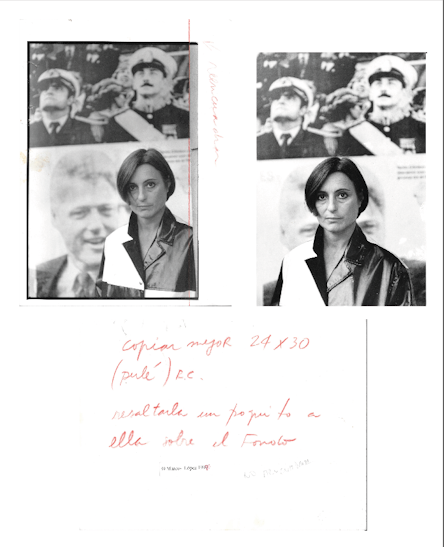

Marcos López’s photographs are a kind of vintage X-rays. Visual language does not denote what it designates but rather displaces the meaning, establishing associations between elements with an apparent lack of relation to each other. Addressing a sociological perspective, the artist transgresses the purism of photography while questioning the linguistic paradigm of traditional documentary photography. The register of the real no longer passes through the photo shoot, through a clipping exerted on the phenomenal reality, but through the construction of pictures or narratives according to procedures related rather to film fiction production. Intimate documentary scenes, popular stories, records of crude, marginal, precarious urbanity, captured in black and white –typical aesthetics of his first years of work- summarize daily life and a corpus of values that live in the heart of families, always exerting a look that gravitates between homage and humor. Rigid poses, solemnity, a certain tension of the models will be a constant in Lopez’s work, showing a solid intentionality without leaving any detail to chance, but rather seeking a compositional balance of the final image typical of a staging. Black and white gives rise to color and there appears the emblematic spirit of his aesthetic works “Latin American Pop” where the baroque horror vacui is reworked by Lopez from Pop Art, thus accounting for a peripheral culture devastated by the effects of hegemonic capitalism and the relationship between power and domination established by the West. Series such as “Black and White” (1982-1992), “Colored Black and White” (1986-2003), “Urban Landscape” (2002-2003), “Criollo Sub-realismo” (2005-2010), “Latin Pop”(1996-2004),“ Debut and Farewell”(2011-2015) among others, refer to a perspective where the artist contemplates kitsch, his delicate pleasure in the accumulation of decorative objects and symbols, documentary allegories, theatricality of the gestures, the intense colors and the resonances of a long tradition that ranges from Mexican Muralism to documentary photography and political cinema, appropriation, the juxtaposition of photographic quotes, the dialogue between painting, photography and the model. Displaying a wide range of stylistic and formal resources, Lopez creates a story where the confrontation between cultures, mandates, impositions, truth criteria and representation reworked from a particular point of view as critical as creative.
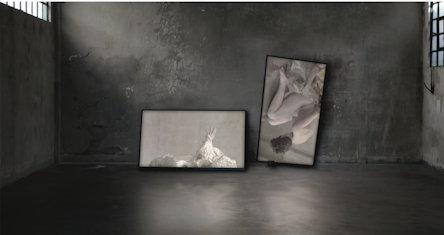
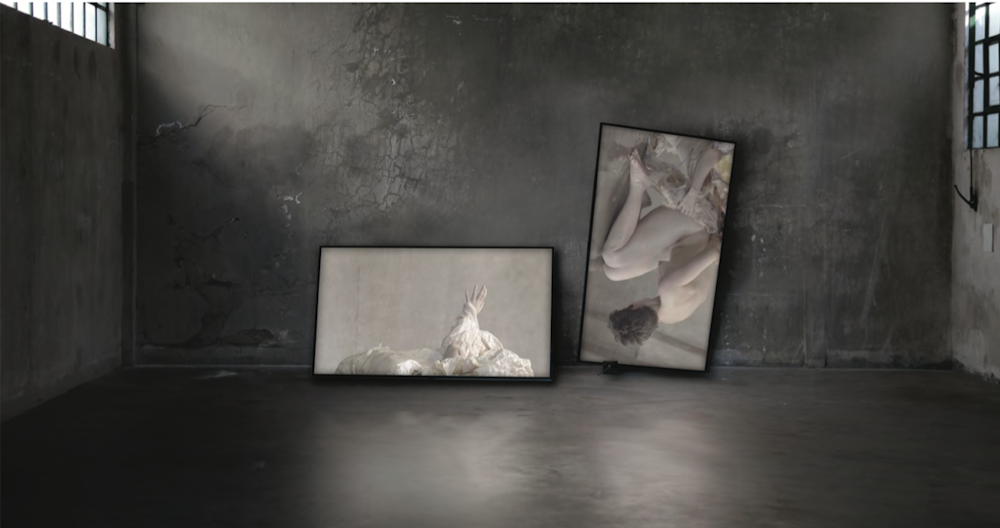
Silvia Rivas has been a pioneer in the experimentation of video art, video installation and performance delegate in Argentina and Latin America, since the beginning of the 90s. Her work is an opening, or a deep bend, of reflections on figurative and embodied time: the internal perception of the present, perception surrounded by the density of the past, the resistance of the future and the inevitability of circumstance. Humanized measures of time, linked to vital existence and emotions, which contrast with the impassive circularity of natural rhythms. It is time, that presence of the instant as a breaking point, urgency, the wait, space, ambiguity and the dual nature of things, the coexistence of opposites and the thresholds that separate different situations, constant themes in her work. Interested in the limits of audiovisual expressions, in the moving image, in the capacity of video to operate passages, capture gestures and point out circumstances; experimenting with several supports and materials that she models according to her poetics to figure out her concepts; exploring the possibilities and dimensions of the body -physical and virtual- through a virtuous form of delegated performance, contained by a sonorous spatiality that enriches her idiosyncratic fictions of suspended time, Silvia Rivas video installations explore the potential of the dilemma that reminds us that life is pure contingency.
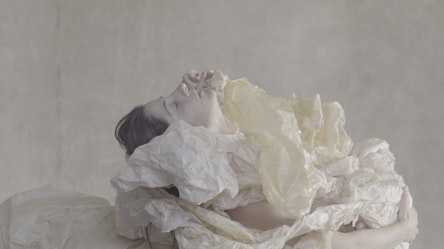
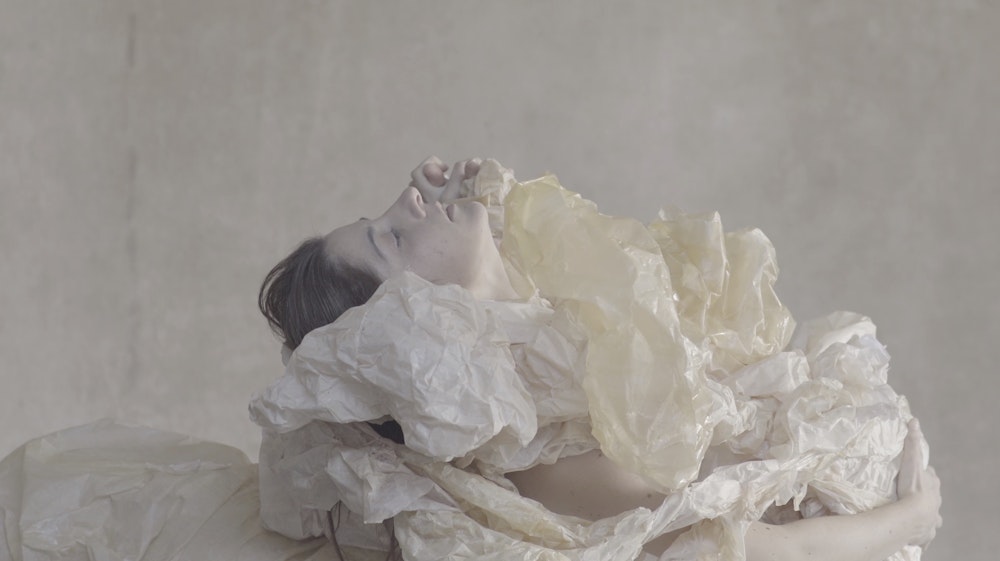
Silvia Rivas has been a pioneer in the experimentation of video art, video installation and performance delegate in Argentina and Latin America, since the beginning of the 90s. Her work is an opening, or a deep bend, of reflections on figurative and embodied time: the internal perception of the present, perception surrounded by the density of the past, the resistance of the future and the inevitability of circumstance. Humanized measures of time, linked to vital existence and emotions, which contrast with the impassive circularity of natural rhythms. It is time, that presence of the instant as a breaking point, urgency, the wait, space, ambiguity and the dual nature of things, the coexistence of opposites and the thresholds that separate different situations, constant themes in her work. Interested in the limits of audiovisual expressions, in the moving image, in the capacity of video to operate passages, capture gestures and point out circumstances; experimenting with several supports and materials that she models according to her poetics to figure out her concepts; exploring the possibilities and dimensions of the body -physical and virtual- through a virtuous form of delegated performance, contained by a sonorous spatiality that enriches her idiosyncratic fictions of suspended time, Silvia Rivas video installations explore the potential of the dilemma that reminds us that life is pure contingency.

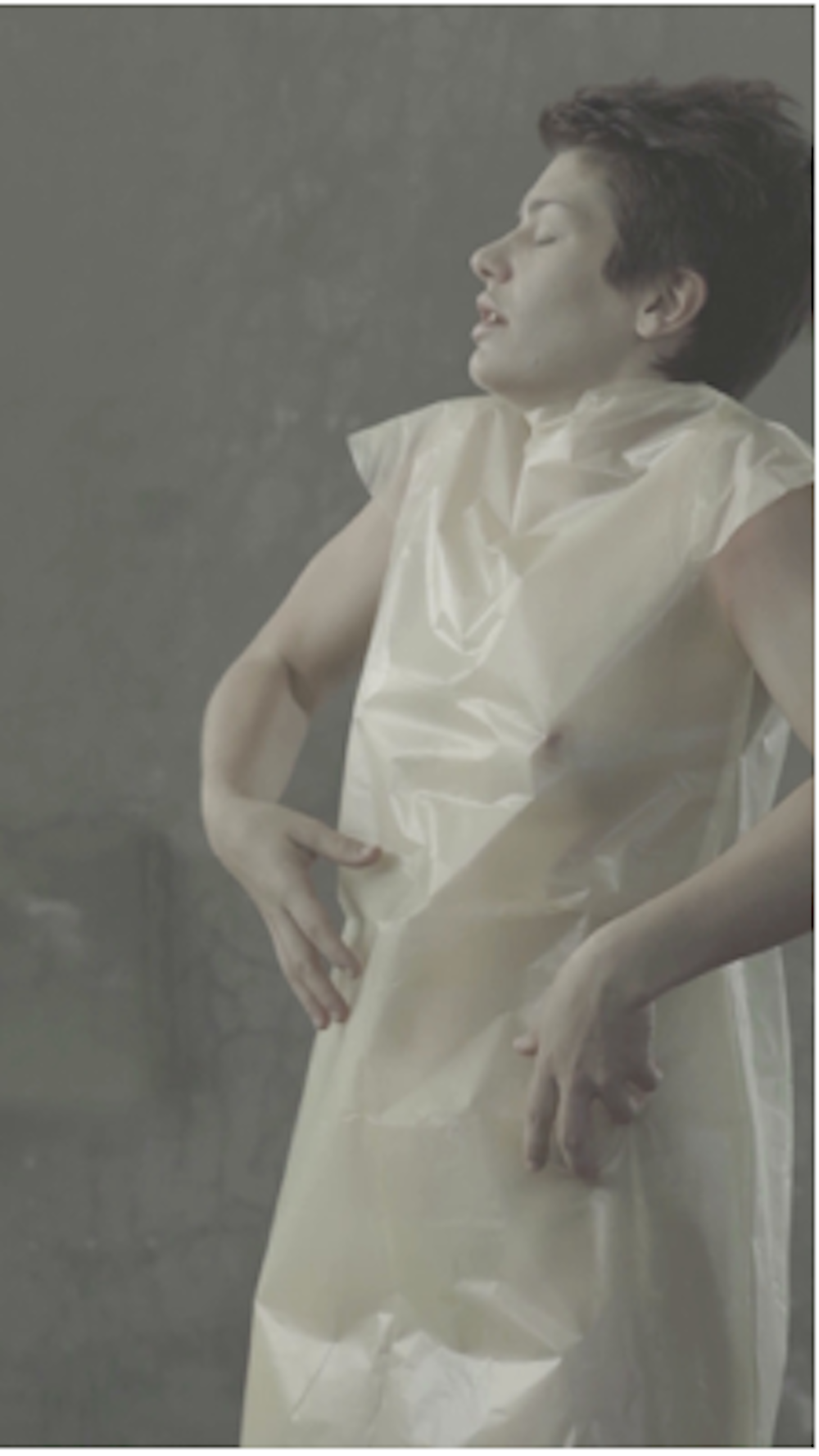
Silvia Rivas has been a pioneer in the experimentation of video art, video installation and performance delegate in Argentina and Latin America, since the beginning of the 90s. Her work is an opening, or a deep bend, of reflections on figurative and embodied time: the internal perception of the present, perception surrounded by the density of the past, the resistance of the future and the inevitability of circumstance. Humanized measures of time, linked to vital existence and emotions, which contrast with the impassive circularity of natural rhythms. It is time, that presence of the instant as a breaking point, urgency, the wait, space, ambiguity and the dual nature of things, the coexistence of opposites and the thresholds that separate different situations, constant themes in her work. Interested in the limits of audiovisual expressions, in the moving image, in the capacity of video to operate passages, capture gestures and point out circumstances; experimenting with several supports and materials that she models according to her poetics to figure out her concepts; exploring the possibilities and dimensions of the body -physical and virtual- through a virtuous form of delegated performance, contained by a sonorous spatiality that enriches her idiosyncratic fictions of suspended time, Silvia Rivas video installations explore the potential of the dilemma that reminds us that life is pure contingency.
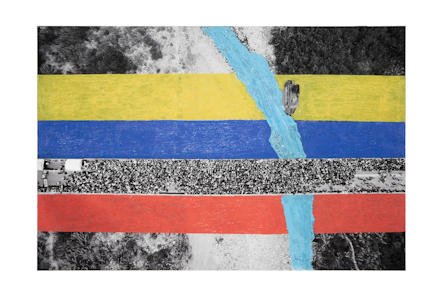

Marcelo Brodsky’s project offers a subjective narrative in which photography acts as memory. Committed with the fight to defend social causes strictly related to the human rights, his work is largely related to situations inherent in violence in the times of military dictatorship in Argentina (1976-1983), the persecution and disappearance of citizens, echoing on the international scene, representing the voices of the peoples who denounce organized State terrorism in any territory. The photography in his work is a witness, a kind of “documentary service” when they combine archive material and documentation that the artist inscribes on the images, condensing traumatic experiences, vestiges of situations linked to horror and exile. Marks, notes, colors, the laconic, archival tone of the information alludes to the impersonal discourse of history; calligraphy, untidy and urgent, invade the photographs pointing out, highlighting, accentuating the faults, the gaps caused by those who are no longer there, or the demands of a society. His work creates memory in time, an invisible bridge which, with its graphics, connects decades and defies oblivion, revealing the presence of silent bodies that speak from a not too distant past. By transposing familiar vernacular materials and personal testimony in the public sphere, the artist provides an opportunity for others to identify and be moved, allowing understanding of distant events. Upon returning from his exile in Spain, Brodsky used family photographs as a starting point for works that try to communicate the trauma of the lived experience. The artist positions himself from a personal point of view to invite the spectator to be moved, identify, generate empathy with the other and create a common space for reflection where individual memories can become collective. His work is displayed in multiple supports within the visual arts and editorial publications where the image is activated as a document blurring the limits between the artistic, the archive work, the videos, the installations, among others. Brodsky explores the ability of photography to provide a space for meditation between private memory and collective stories. It is thanks to his absolute knowledge of the use of the power of images and of the word that Marcelo Brodsky manages to transmit through his works a message that commits us as political individuals.
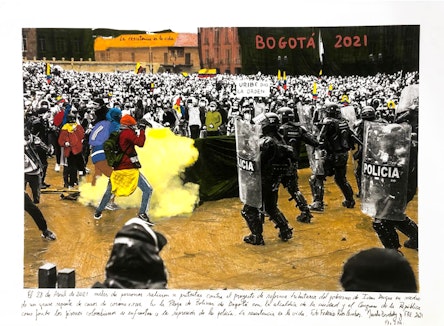
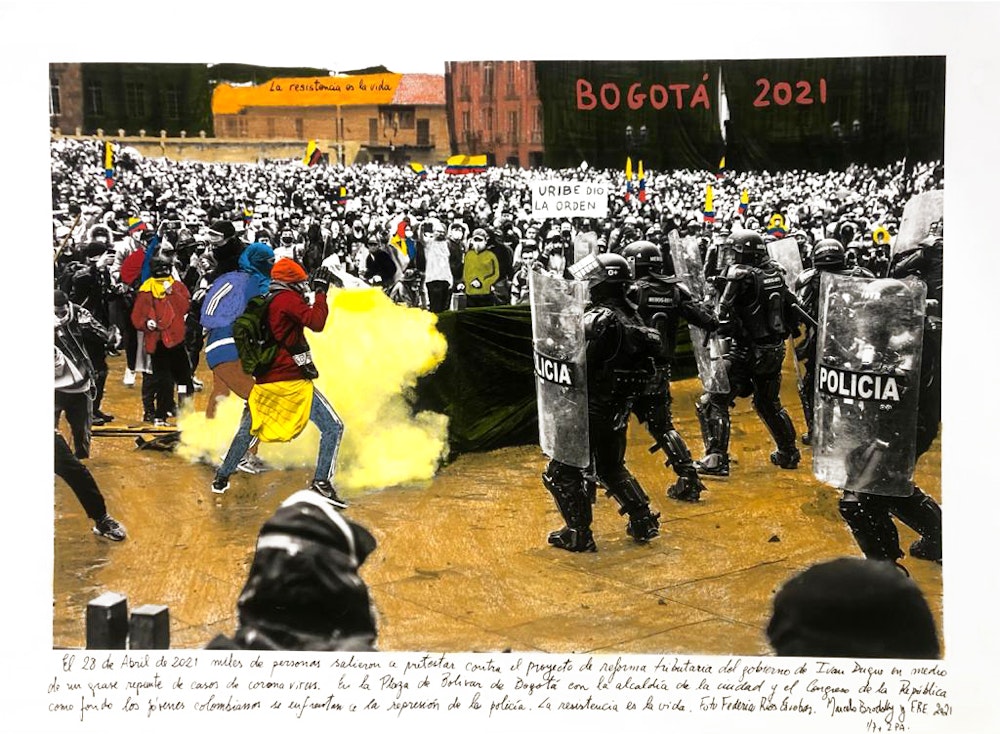
Marcelo Brodsky’s project offers a subjective narrative in which photography acts as memory. Committed with the fight to defend social causes strictly related to the human rights, his work is largely related to situations inherent in violence in the times of military dictatorship in Argentina (1976-1983), the persecution and disappearance of citizens, echoing on the international scene, representing the voices of the peoples who denounce organized State terrorism in any territory. The photography in his work is a witness, a kind of “documentary service” when they combine archive material and documentation that the artist inscribes on the images, condensing traumatic experiences, vestiges of situations linked to horror and exile. Marks, notes, colors, the laconic, archival tone of the information alludes to the impersonal discourse of history; calligraphy, untidy and urgent, invade the photographs pointing out, highlighting, accentuating the faults, the gaps caused by those who are no longer there, or the demands of a society. His work creates memory in time, an invisible bridge which, with its graphics, connects decades and defies oblivion, revealing the presence of silent bodies that speak from a not too distant past. By transposing familiar vernacular materials and personal testimony in the public sphere, the artist provides an opportunity for others to identify and be moved, allowing understanding of distant events. Upon returning from his exile in Spain, Brodsky used family photographs as a starting point for works that try to communicate the trauma of the lived experience. The artist positions himself from a personal point of view to invite the spectator to be moved, identify, generate empathy with the other and create a common space for reflection where individual memories can become collective. His work is displayed in multiple supports within the visual arts and editorial publications where the image is activated as a document blurring the limits between the artistic, the archive work, the videos, the installations, among others. Brodsky explores the ability of photography to provide a space for meditation between private memory and collective stories. It is thanks to his absolute knowledge of the use of the power of images and of the word that Marcelo Brodsky manages to transmit through his works a message that commits us as political individuals.

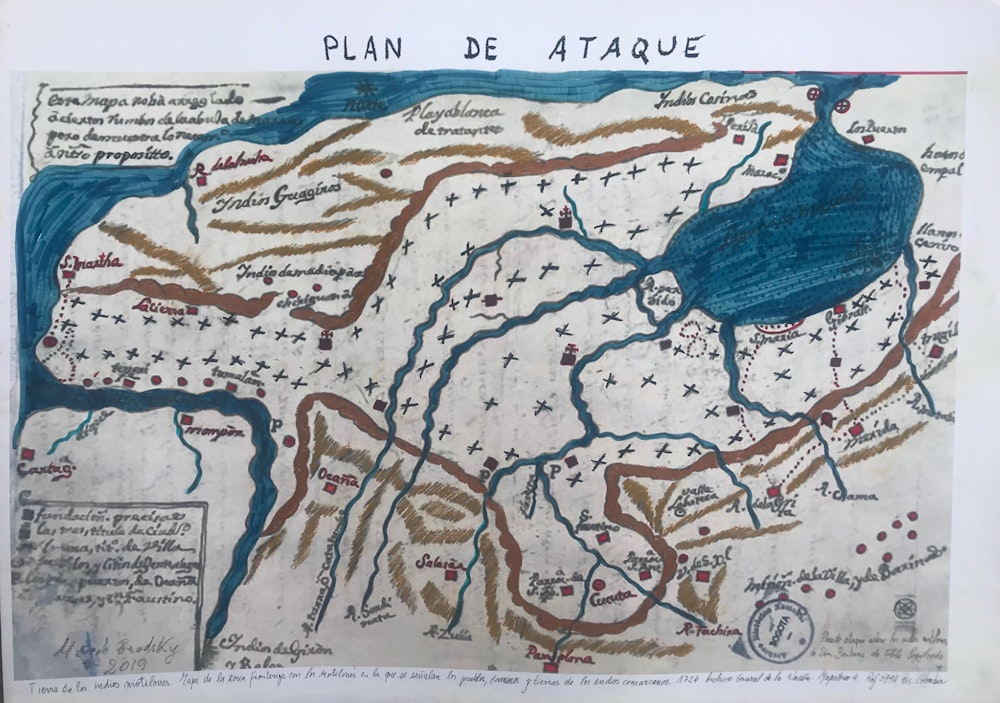
Marcelo Brodsky’s project offers a subjective narrative in which photography acts as memory. Committed with the fight to defend social causes strictly related to the human rights, his work is largely related to situations inherent in violence in the times of military dictatorship in Argentina (1976-1983), the persecution and disappearance of citizens, echoing on the international scene, representing the voices of the peoples who denounce organized State terrorism in any territory. The photography in his work is a witness, a kind of “documentary service” when they combine archive material and documentation that the artist inscribes on the images, condensing traumatic experiences, vestiges of situations linked to horror and exile. Marks, notes, colors, the laconic, archival tone of the information alludes to the impersonal discourse of history; calligraphy, untidy and urgent, invade the photographs pointing out, highlighting, accentuating the faults, the gaps caused by those who are no longer there, or the demands of a society. His work creates memory in time, an invisible bridge which, with its graphics, connects decades and defies oblivion, revealing the presence of silent bodies that speak from a not too distant past. By transposing familiar vernacular materials and personal testimony in the public sphere, the artist provides an opportunity for others to identify and be moved, allowing understanding of distant events. Upon returning from his exile in Spain, Brodsky used family photographs as a starting point for works that try to communicate the trauma of the lived experience. The artist positions himself from a personal point of view to invite the spectator to be moved, identify, generate empathy with the other and create a common space for reflection where individual memories can become collective. His work is displayed in multiple supports within the visual arts and editorial publications where the image is activated as a document blurring the limits between the artistic, the archive work, the videos, the installations, among others. Brodsky explores the ability of photography to provide a space for meditation between private memory and collective stories. It is thanks to his absolute knowledge of the use of the power of images and of the word that Marcelo Brodsky manages to transmit through his works a message that commits us as political individuals.